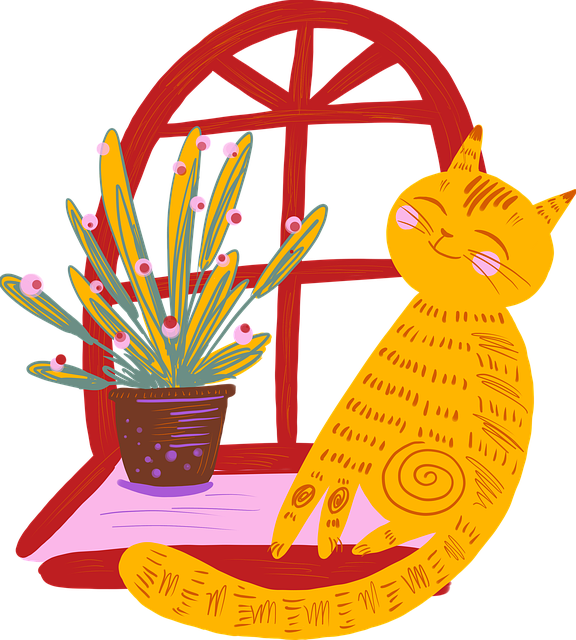Modern interior design embraces nature through interior plant design, particularly living walls and vertical gardens. These trends transform spaces, enhance air quality, and offer versatile aesthetics, blending outdoor connections with urban living. By strategically placing plants vertically, designers create harmonious interiors that cater to aesthetic preferences while promoting biodiversity and tranquility. Proper selection, placement, and maintenance ensure thriving vertical gardens that beautifully integrate nature into modern homes and offices.
Discover the vibrant world of modern interior design as we explore the rising trend of living walls and vertical gardens. In today’s bustling urban spaces, embracing nature’s touch has become essential for creating serene and aesthetically pleasing environments. This article delves into creative solutions like vertical spaces and living walls, offering a fresh perspective on interior plant design. From concept to stunning decor, learn how to incorporate plants seamlessly, balancing both esthetics and functionality in your space.
Embracing Nature's Touch: Interior Plant Design Trends
In recent years, there’s been a noticeable shift in modern interior design trends, with a growing embrace of nature’s touch. One prominent trend is the integration of interior plant design – living walls and vertical gardens – into contemporary spaces. These natural elements not only add a splash of color and texture but also offer numerous benefits, such as improved air quality, enhanced acoustic properties, and a calming aesthetic that promotes relaxation and well-being.
The popularity of interior plant design can be attributed to its versatility, allowing plants to be incorporated seamlessly into various rooms and layouts. From lush green vines cascading down living walls to carefully curated vertical gardens that double as functional art, these designs cater to both aesthetic preferences and practical needs. As a result, modern homes and offices are becoming more connected to the outdoors, creating harmonious interiors that reflect a conscious effort to blend nature and design beautifully.
Vertical Spaces: Creative Solutions for Modern Interiors
In modern interior design, vertical spaces offer a unique and creative opportunity to enhance aesthetics while incorporating nature. Living walls and vertical gardens are emerging trends that transform blank walls into vibrant, green oases, adding both visual appeal and life to any space. These innovative solutions are particularly appealing for urban dwellers who crave connections with the outdoors without sacrificing floor area.
By integrating interior plant design elements vertically, designers can optimize limited real estate while promoting biodiversity and improving air quality. From lush hanging gardens to structured vertical panels, these creative arrangements offer versatility in styles, allowing homeowners and professionals alike to cultivate a sense of tranquility and greenery within their modern interiors.
Living Walls: From Concept to Stunning Decor
Living walls, also known as vertical gardens, have emerged as a dynamic and innovative element in modern interior design. This concept transforms plain walls into lush, verdant oases, bringing nature indoors. By integrating a variety of plants, from cascading vines to delicate succulents, these green features not only enhance aesthetics but also offer numerous practical benefits.
From a design perspective, living walls provide an opportunity to create unique focal points and add depth to spaces. They can be tailored to suit different styles, whether it’s a minimalist aesthetic with carefully curated succulents or a vibrant, lush display of climbing plants. Incorporating interior plant design elements like these can improve air quality, create a calming atmosphere, and bring a touch of biodiversity into contemporary living and working environments.
Incorporating Plants: Tips for Balancing Esthetics and Functionality
Incorporating plants into modern interior designs, whether through living walls or vertical gardens, requires a balance between esthetics and functionality. Start by assessing your space and choosing plants that complement your existing decor while considering light availability and each plant’s specific care needs. A mix of annuals, perennials, succulents, and air-purifying varieties can create an engaging visual appeal while enhancing air quality.
Group plants strategically to form focal points or create a sense of depth. Utilize varying heights and textures to add dimension and visual interest. Remember that proper placement is key; some plants thrive in direct sunlight, while others prefer shade. Regular maintenance, including watering, pruning, and fertilizing, ensures your vertical garden remains healthy and vibrant, enhancing the overall interior plant design and promoting a harmonious blend of nature and modern aesthetics.
Modern interior designs are evolving to embrace natural elements, and living walls along with vertical gardens are leading this trend. These innovative features not only enhance aesthetics but also improve air quality and create peaceful atmospheres. By incorporating plants into your space, you can achieve a harmonious balance between form and function. As we conclude, remember that interior plant design is a versatile art that can transform any modern space into a vibrant sanctuary.
